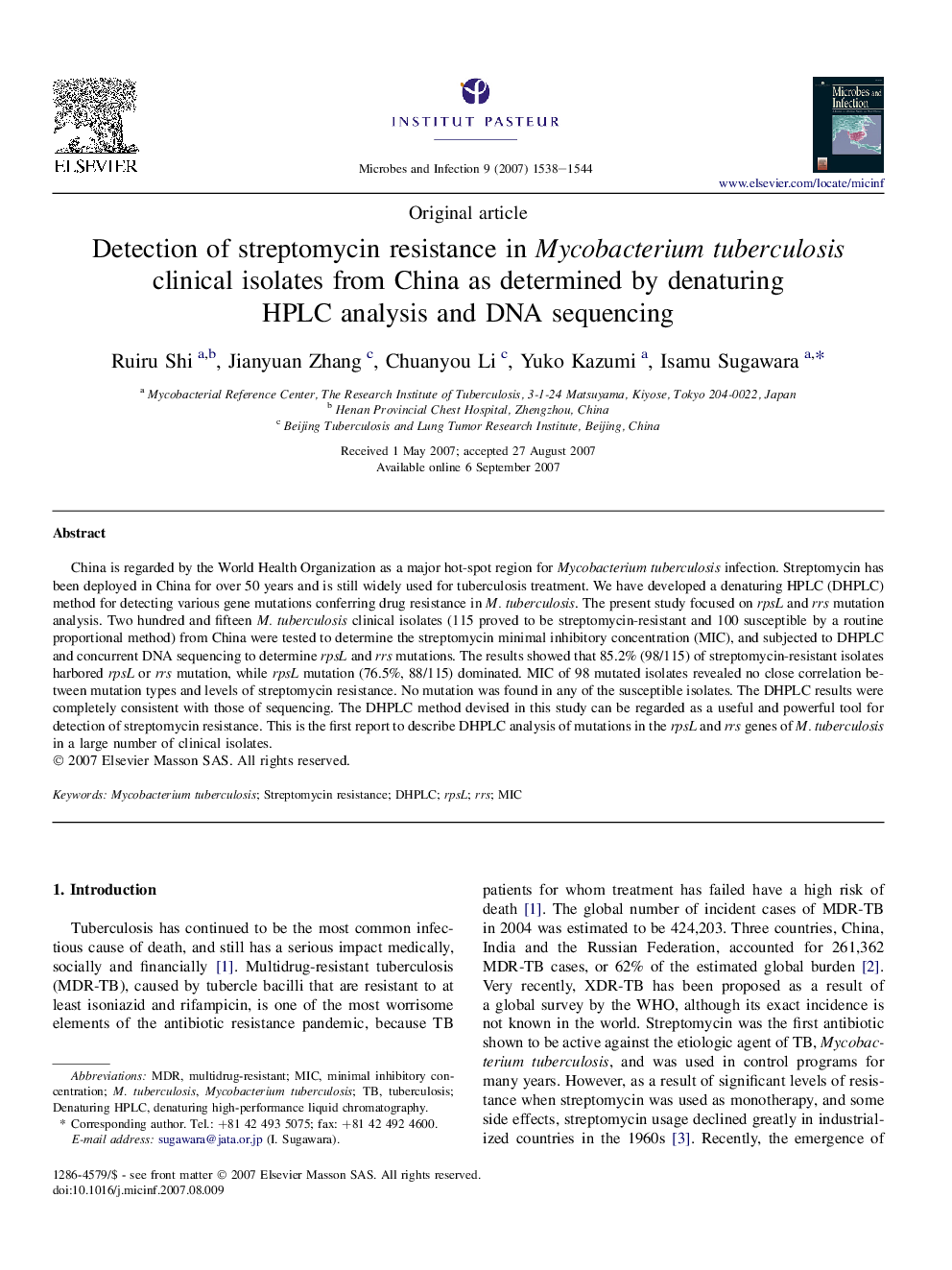| Article ID | Journal | Published Year | Pages | File Type |
|---|---|---|---|---|
| 3416007 | Microbes and Infection | 2007 | 7 Pages |
China is regarded by the World Health Organization as a major hot-spot region for Mycobacterium tuberculosis infection. Streptomycin has been deployed in China for over 50 years and is still widely used for tuberculosis treatment. We have developed a denaturing HPLC (DHPLC) method for detecting various gene mutations conferring drug resistance in M. tuberculosis. The present study focused on rpsL and rrs mutation analysis. Two hundred and fifteen M. tuberculosis clinical isolates (115 proved to be streptomycin-resistant and 100 susceptible by a routine proportional method) from China were tested to determine the streptomycin minimal inhibitory concentration (MIC), and subjected to DHPLC and concurrent DNA sequencing to determine rpsL and rrs mutations. The results showed that 85.2% (98/115) of streptomycin-resistant isolates harbored rpsL or rrs mutation, while rpsL mutation (76.5%, 88/115) dominated. MIC of 98 mutated isolates revealed no close correlation between mutation types and levels of streptomycin resistance. No mutation was found in any of the susceptible isolates. The DHPLC results were completely consistent with those of sequencing. The DHPLC method devised in this study can be regarded as a useful and powerful tool for detection of streptomycin resistance. This is the first report to describe DHPLC analysis of mutations in the rpsL and rrs genes of M. tuberculosis in a large number of clinical isolates.
